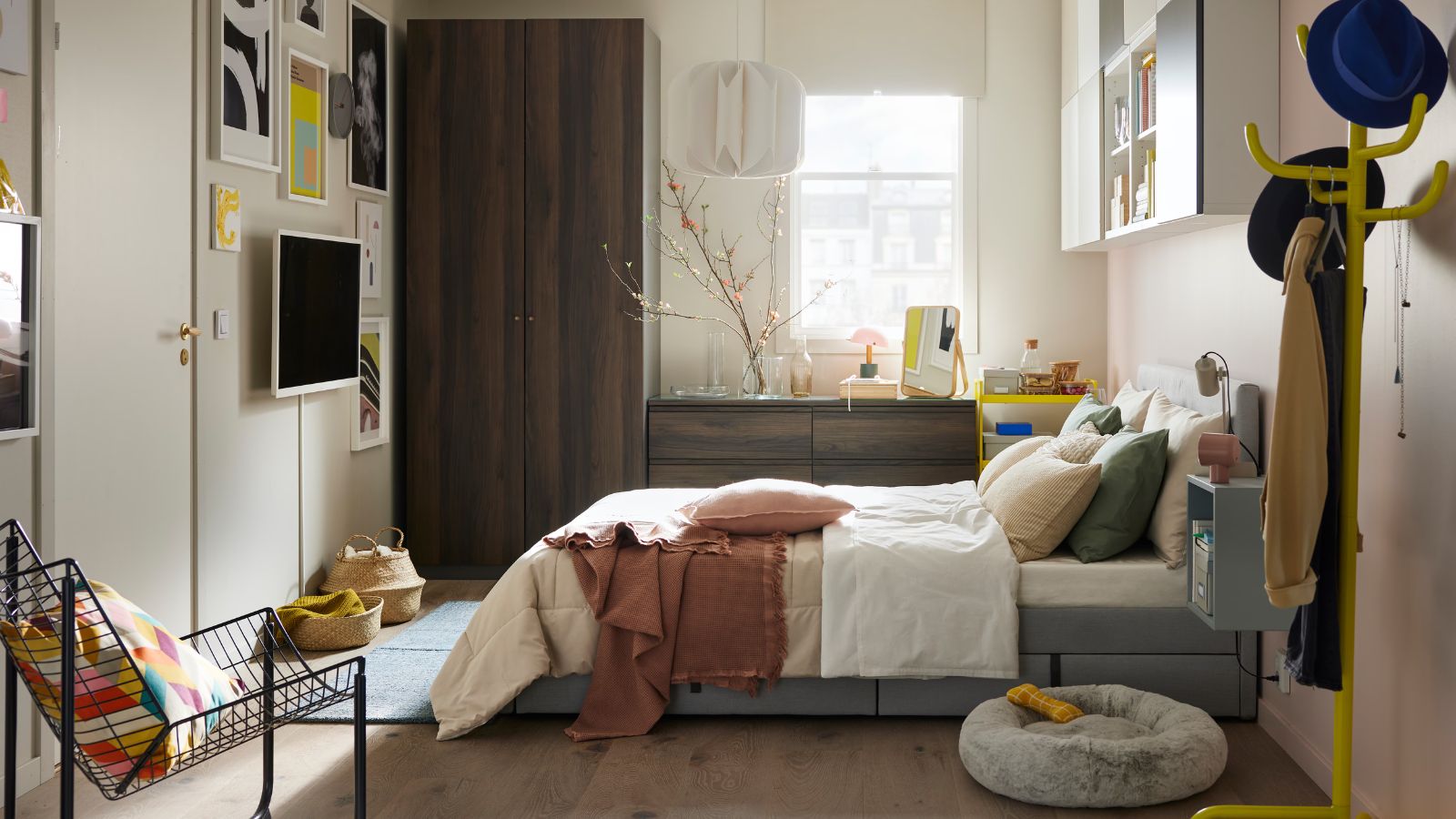
As H&G's resident Sleep Editor, my quest to learn how to sleep better takes me all around the world. Last week, it took me to Älmhult, Sweden, the cradle of IKEA. I stayed at the IKEA Hotel, mooched around the IKEA Museum, and visited the IKEA of Sweden headquarters, where mattress manufacturers and interior designers are dreaming up the solutions to common sleep problems.
In our welcome meeting, IKEA of Sweden Managing Director Fredrika Inger shared a shocking statistic: 'On average, people spend 26 years of their life sleeping – and 7 years trying to sleep.' Fredrika theorized what keeps us up at night: physical discomfort, from noise pollution to scratchy sheets, as well as underlying anxieties − how will I perform tomorrow if I can't sleep tonight? 'Worry keeps us awake,' Fredrika concluded, 'but IKEA takes the worry out of bed making.'
That's when Fredrika introduced the concept of complete sleep. To paraphrase her presentation, good sleep isn't all about shut-eye. If you want to learn how to sleep better, you need to refine your bedtime routine and waking rituals and get your bedroom ready for sleep. The idea of Complete Sleep is underpinned by IKEA's six sleep essentials: comfort; temperature; light; sound; air quality; and clutter (or lack thereof).
6 Scandinavian sleep secrets from IKEA
I spoke to mattress manufacturers, interior designers, and product engineers to uncover IKEA's Scandinavian sleep secrets. To help you implement their six sleep essentials into your own routine, I've rounded up a few of the best-loved IKEA products, along with some tried and trusted favorites from our reviews team.
Comfort

As H&G's resident sleep writer, I know what makes the best mattress in the US, but I was eager to learn how a mattress gets made over at IKEA of Sweden. Tobias Franzen (Senior Product Design Engineer, Beds & Mattresses) and Johan Kroon (Product Design Developer, Beds & Mattresses) talked me through regional differences in sleep preferences. Here in the US, we like a Medium mattress to cushion our joints. Over in Asia, they prefer Firm to Extra Firm: IKEA stores won't even stock Medium mattresses, because they know they won't sell.
An IKEA sleep system comprises a bed base, a middle mattress, and a mattress pad − what we might think of as a mattress topper, but without any corner straps. Instead, there's a grip sheet on the underside of the mattress pad to maintain friction with the middle mattress and stop the topper from slipping and sliding. Johan and Tobias say that the mattress pad is the best-kept sleep secret in Sweden – an easy and affordable way to alter the look and feel of your mattress for more supportive sleep.
IKEA is one of the few remaining online mattress brands that still has physical showrooms in their stores. I always recommend that shoppers test their mattress before they buy it. It's the best way to compare makes and models and a direct line to expert knowledge from a salesperson. Over at IKEA, prospective shoppers answer five questions to help them decide: which mattress should I buy? The questions concern your body type, your sleep position, and your weight, as well as whether you're active in your sleep and whether you run warm or cool (more on temperature in a minute).
Comfort extends beyond the mattress. You can't get comfortable without the best pillow (thick and squishy for back and side sleepers, flatter and firmer for stomach sleepers. If you're wondering how to host guests without a guest room, or even a spare bed, then Juan Cardenal Baste (Product Design Developer, Sofa Beds) has a solution. IKEA makes some of the best sleeper sofas for space efficiency. My personal favorite is the SKÖNABÄCK, with its cunning storage cavity and pull-out design. Anyone six foot and under could comfortably sleep on this sofa bed, but taller guests might appreciate something more spacious.
My sister has this mattress in her guest room, and I sleep on it every time I stay over. As a stomach sleeper, I appreciate the medium-firm support of the pocket springs, which keeps my spine from sinking too far into the mattress. Like any innerspring mattress, it's breathable and bouncy, but side sleepers might appreciate something softer.
You can buy the best mattress and still get bad sleep if you don't have the right pillow. If you're a back or side sleeper, I recommend the NORDSTÅLÖRT. It's ergonomically designed around the curvature of your neck and filled with memory foam to relieve pressure. My sister sleeps on one of these to ease her neck pain, and she swears by it.
There's much more to this sleeper sofa than meets the eye. I watched as Juan lifted the cushion to create an extra seat, unfolded that seat into a bed, and retrieved spare bedding from a cunning storage cavity inside the sofa. It's super space-efficient for smaller bedrooms.
Temperature
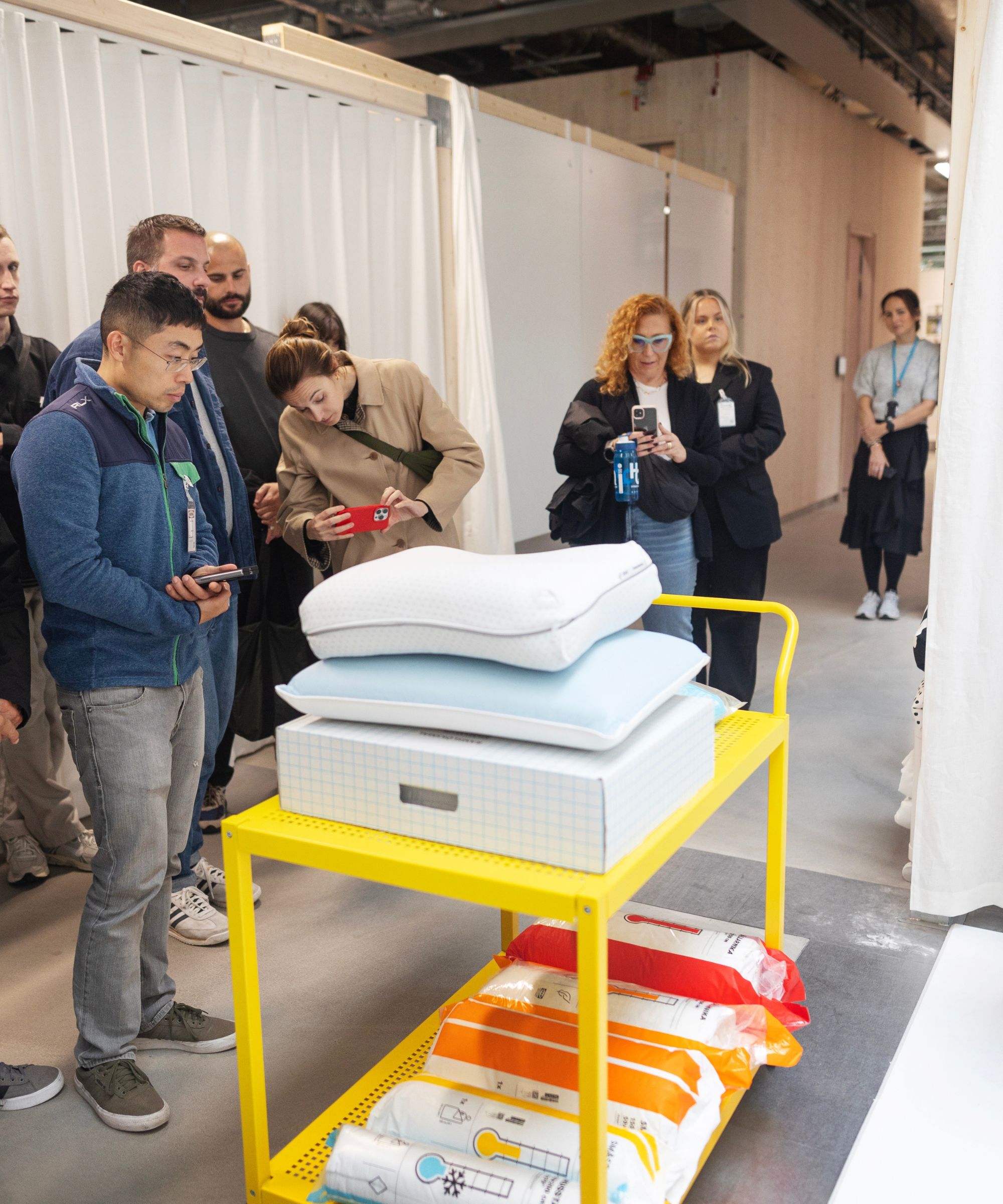
If you suffer from night sweats or hot flashes, or you tend to run a little warm, you're what's known as a hot sleeper. You need cooling bedding to regulate your temperature and keep you just the right side of cool and dry. On the other end of the spectrum, you might be a cold sleeper. You need duvets with thicker fills to retain and radiate your body heat.
Where you live also impacts your internal sleep temperature. IKEA operates in 63 markets around the world, from snow-capped corners of Northern Europe to hot, dry countries in the Middle East and Africa. If you live in a temperate climate, with warmer summers and colder winters, then you might want to shop a set of bedding to suit each season.
Evamaria Rönnegård (Range Area Manager, Bed & Bath Textiles) understands that different sleepers need different materials to keep cool and comfortable. She recommends lyocell and viscose blends for their moisture-wicking properties and linen for its touchable texture. Cotton is a safe bet for all seasons, while polyester might be better for cold sleepers.
Evamaria explained that IKEA color-codes their thermoregulating bedding for ease. If you cast your eye around the sleep section of the shop, you should be able to spot duvets and pillows to keep you cool (blue), cozy (red), and just right (yellow).
This lightweight duvet insert is filled with lyocell and cotton to breathe and absorb moisture. It's a great choice for hot sleepers and summer nights. If you suffer from night sweats or hot flashes, you might want to use a cooling comforter all year round.
Our expert tester, Lucy, started sleeping on these cooling sheets at the start of the summer. Since, they've seen her through hot nights and heat waves, and they still haven't creased, even after countless cycles in the washer and dryer.
Wool is naturally moisture-wicking and antimicrobial to bust the bacteria that breeds in warm, damp spaces, such as beds. It also makes a great thermoregulator. Out of all the cooling pillows in my linen closet, I chose this one to get me through the summer heatwave.
Light
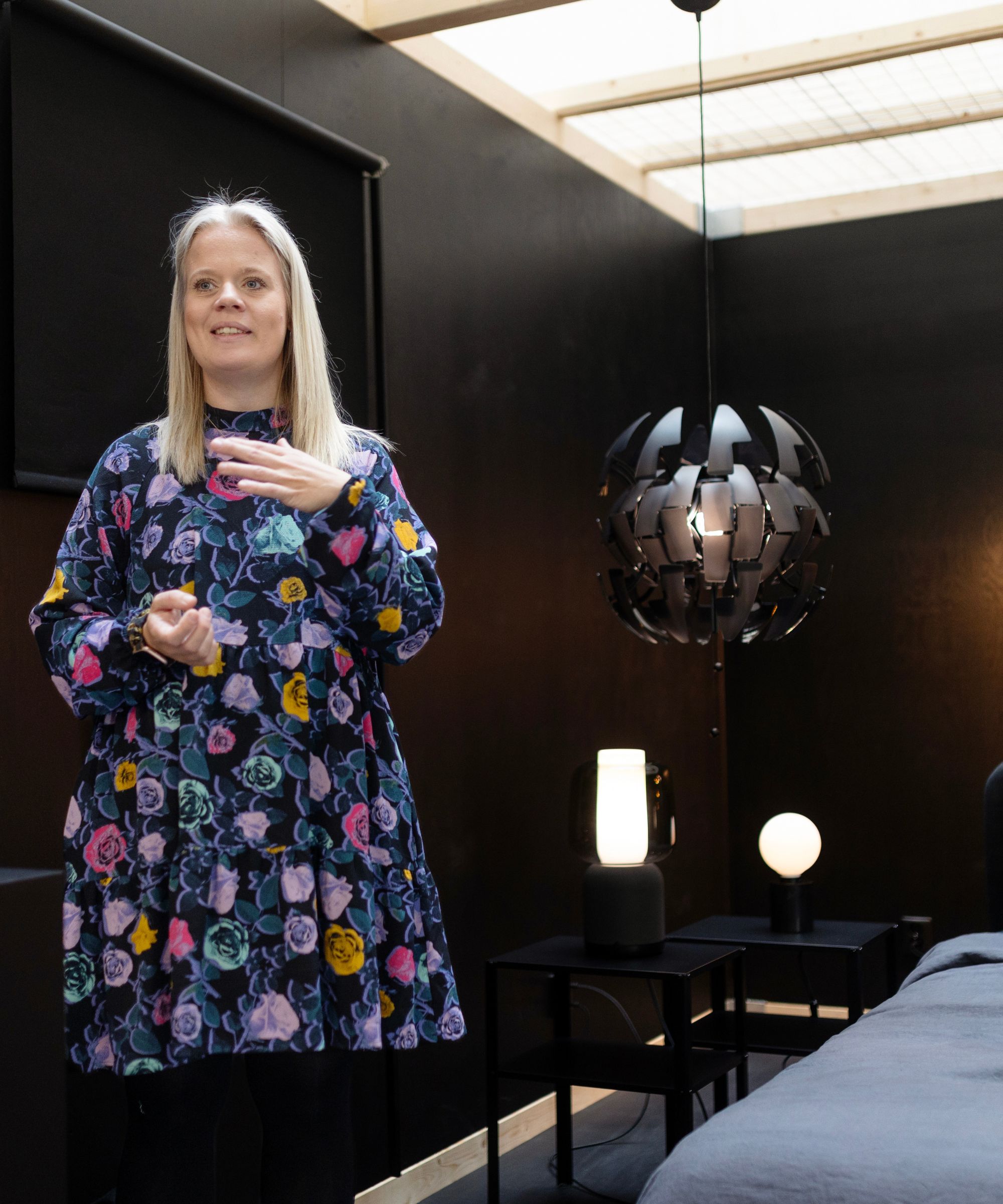
As part of my visit to IKEA of Sweden, I got the chance to interview Johan Ejdemo (Design Manager). I asked him, out of the six sleep essentials, which he struggled with the most in his own home. For Johan, it's light. 'I like to wake up to natural light,' he explained, 'but that's easier said than done in Sweden. It gets so light so early in the summer, and then in winter, the sun might only rise at eight or nine in the morning – at which point, I'm late for work.'
I asked Johan what kinds of changes he could make to control the light in his living space. 'I bought a set of black-out curtains for summer,' he said, 'and that helped me stay asleep for longer.' For winter, Johan could invest in one of the best sunrise alarm clocks to simulate natural light.
These blackout curtains get a great write-up from IKEA customers. 'Even when the sun is up, I have no clue what time it is, because no light is coming into the room from the windows. It's like every room can be as dark as a movie theater.'
This timeless design was first presented in IKEA's 1964 catalog. Two truncated cones create a funnel to minimize the harsh glare of exposed bulbs, so you can wind down well.
'I tested the Lumie Shine 300 a few years ago and loved it,' says Alex David, who leads our central reviews team. 'While I'm not convinced by all of the alarm sounds – the 'goat' alarm is a little bizarre – winding down the day with a sunset and waking with a sunrise improved my sleep.'
Sound
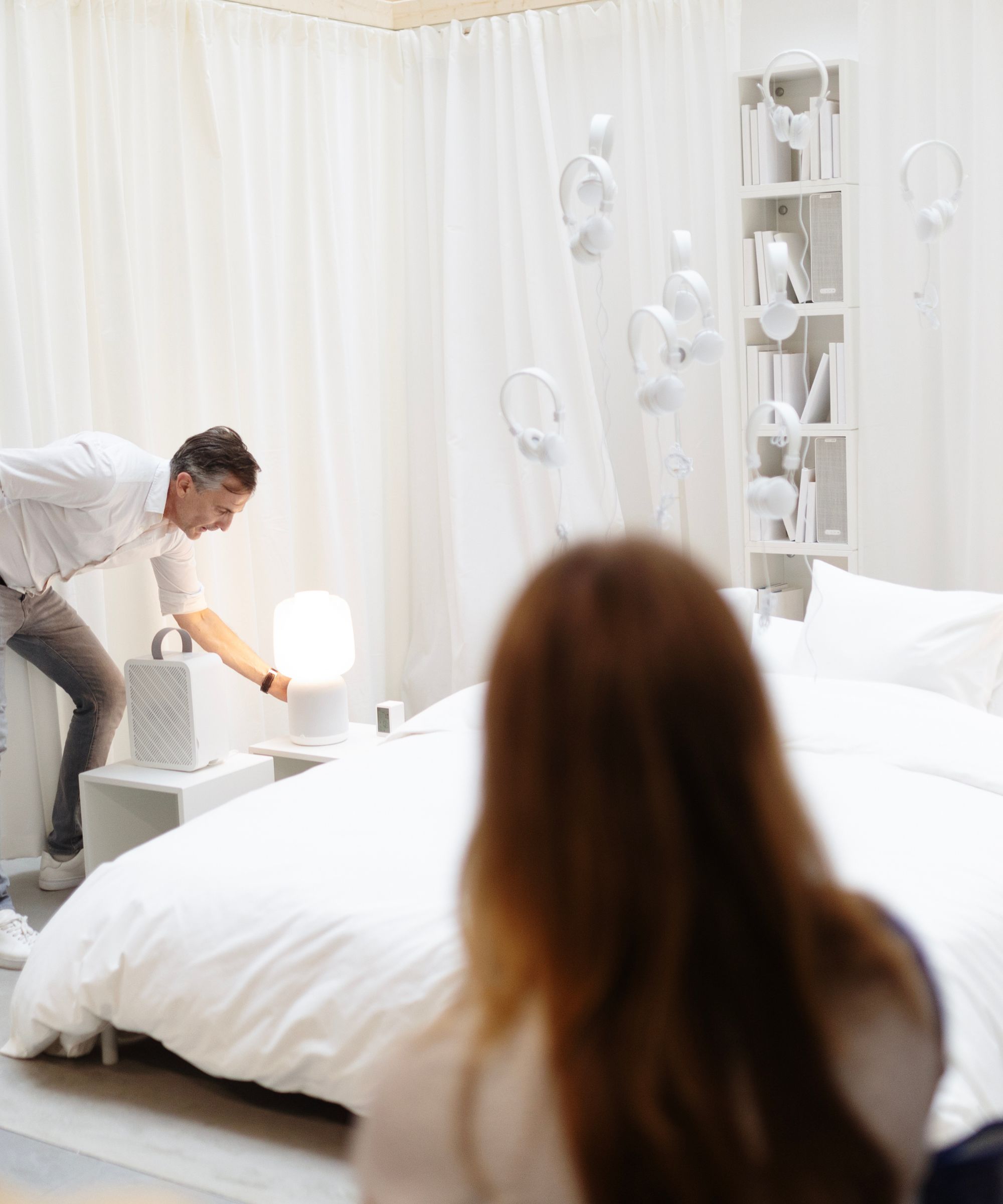
Some people need total silence to sleep. If you want to learn how to soundproof a bedroom, I suggest you start with a set of block-out curtains. That's 'block-out', rather than 'black-out', though the best curtains can absorb unwanted noise and light at the same time. You're looking for thick, heavy curtains to soak up sound. You could also try dampening sound with a thick-pile carpet.
Now, I struggle to sleep in total silence − it leaves too much space for my mind to wander. When I shared my conundrum with Stjepan Begic (Range Design Leader, IKEA Home Smart), he asked whether I'd ever tried sleeping with white noise. 'I did, but it doesn't work for me,' I said: 'I have to play the sounds from my phone, and I don't like sleeping with my phone in the bedroom.'
That's when Stjepan pointed me in the direction of one of IKEA's most innovative inventions: the SYMFONISK. A collaboration between IKEA and Sonos, the SYMFONISK is a combination lamp-and-speaker. Stjepan explained that I could connect my phone to the speaker, cue up some white noise, then leave my phone outside the bedroom and settle in for peaceful sleep.
This is the sort of space-saving solution that IKEA does best. The result of a collaboration between IKEA and Sonos, the base of the lamp is a WiFi speaker with 180-degree sound. Use it to play white noise to soothe yourself to sleep.
If you share a wall with noisy neighbors, or your bedroom backs onto a busy road, then you could use some acoustic wood wall panelling to absorb sound. This wood is pretty as well as practical with natural, neutral charm.
Laying down a high-pile rug is one of the easiest ways to absorb sound and improve acoustics in your bedroom. I like the look of this one from Rugs USA − it's the sort of rug that could complement any color palette.
Air quality
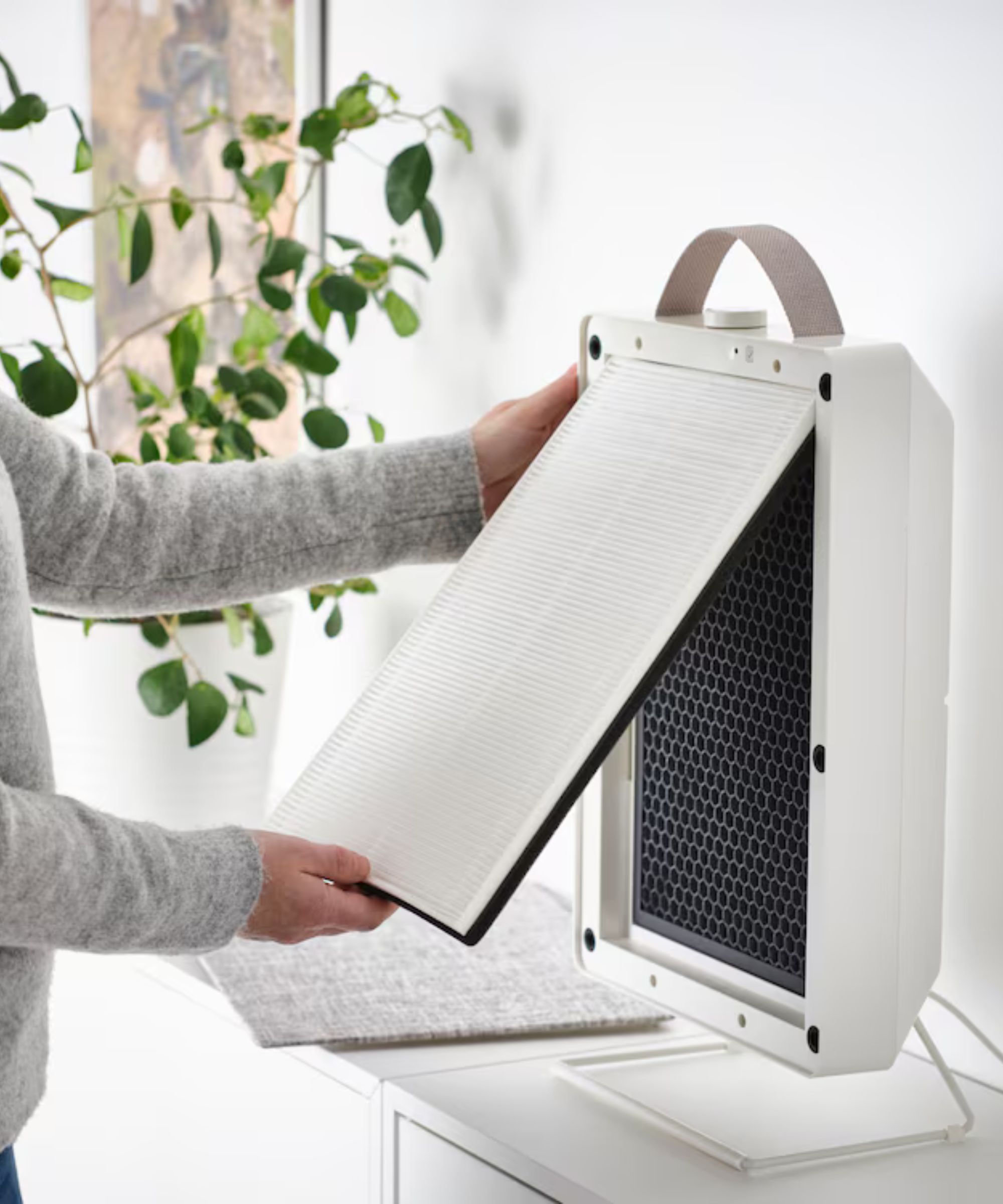
Perhaps you live in an urban area and you're often exposed to smoke and smog. Maybe your bedroom backs onto a busy road, filled with idling vehicles and their exhaust fumes. Or maybe you're surrounded by farmland, inhaling the scent of fertilizers and animal manure. My point is that you can't control the air quality outside your home – but, with one of the best air purifiers, you can filter out the pollutants and pathogens that wreak havoc on your health.
'An air purifier will, naturally, improve your air quality at home, but it'll also make a huge difference to your quality of sleep,' says Home Tech Editor Dan Fauzi. 'Airborne, harmful pollutants − like dust, pollen, dander, and smoke – live in our indoor spaces at all times unless we properly filter them out. This is particularly important for inner-city areas, where the air pollution from vehicles, businesses, and even smokers can make its way into our homes. As an allergy sufferer, I feel the benefits of using an air purifier in my bedroom as pollen and pet dander don't trigger my symptoms overnight, leaving me clearer and more refreshed when I wake up.'
'A good bedroom air purifier will need a HEPA filter to capture those super-fine particles, a carbon filter to capture smoke, and low noise levels for a peaceful sleep,' advises Dan. 'It doesn't hurt to look out for strong energy efficiency, either: you might be running this thing for eight hours, or as long as you happen to sleep.'
Stjepan Begic (Range Design Leader, IKEA Home Smart) talked me through IKEA's range of air purifiers to suit any space. The portable UPPÅTVIND is designed for table-top placement, while the neat and narrow STARKVIND is small enough to slot in the space between the wall and your furniture. If you're really keen to save on space, you could opt for the STARKVIND Side Table with in-built air purifier: talk about multifunctionality.
This portable air purifier incorporates a cable management system. Once you've plugged it in and set it down, you can feed the excess cable back into the body of the air purifier to crack down on cord clutter.
'I'd say the Airmega Aim strikes a good balance between affordability and functionality,' says our expert tester, Gabriella Dyson. 'Budget models usually don't offer this level of air quality monitoring or multi-stage filtration.'
According to home tech expert Dan Fauzi, 'this is an old-school air purifier. It might not have the power or the smart features of more expensive machines, but it's a highly effective cleaner for small apartments and single rooms.'
Clutter
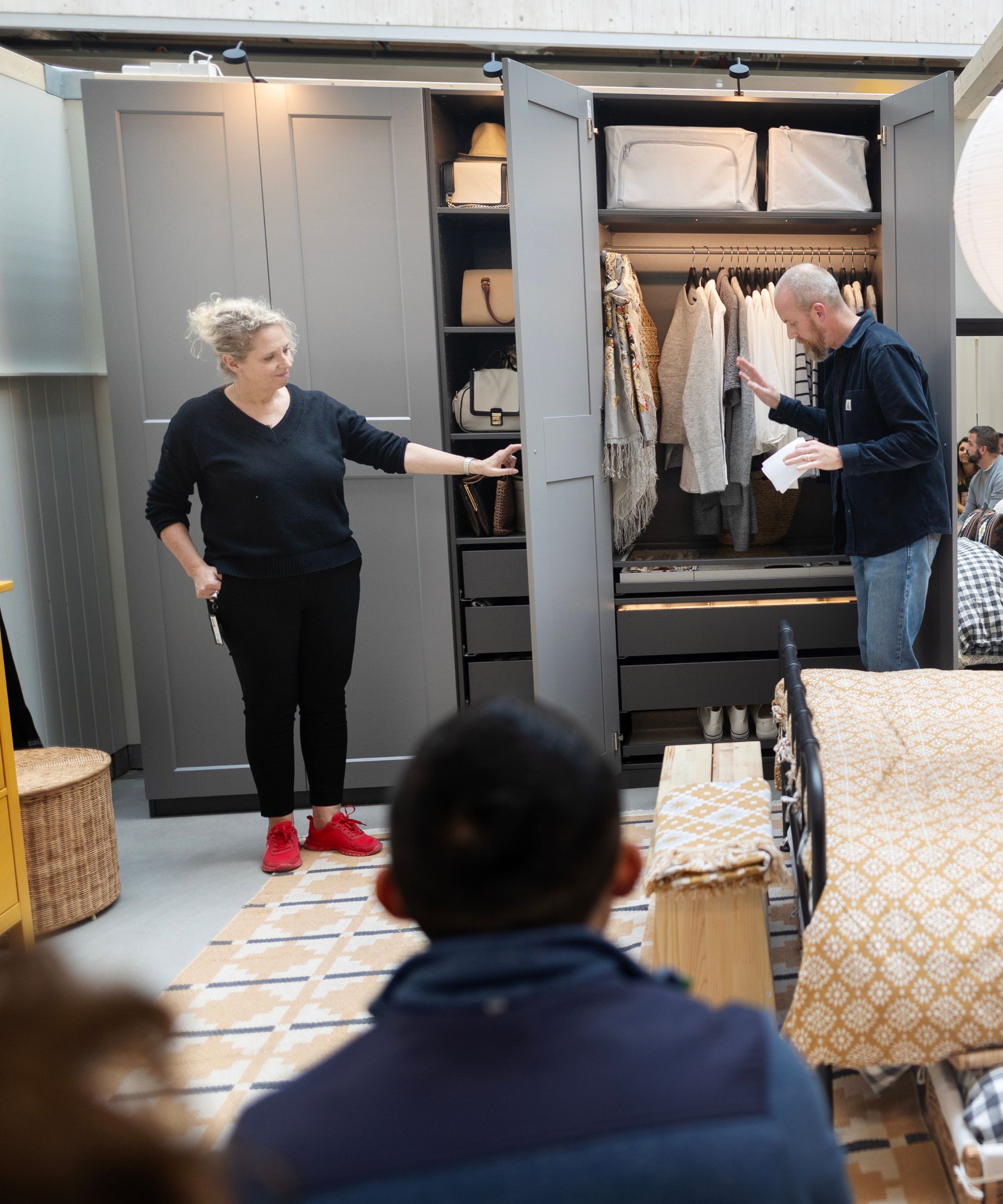
'Given that we spend so much of our lives in our bedrooms, it is essential that we keep them clean and clutter-free,' says Solved Content Editor Chiana Dickson. 'While it might not seem like a big deal (we close our eyes when we go to sleep, anyway), a messy bedroom can affect your sleep quality. According to a 2017 clinical study, physical and visual clutter can lead to higher levels of stress and anxiety, making it harder to fall and stay asleep. As a result, we wake up still feeling tired and have less energy to maintain our spaces. It is a vicious cycle.'
'Decluttering and organizing a bedroom can also help to organize your morning routine,' adds Chiana. 'After all, it is easier to get dressed when you don't have to clamber over your 'floor-drobe' to reach your closet. Following the principles of complete sleep might not help you to become a morning person, but it is a small step towards feeling a little less stressed out from day to day.'
IKEA has all sorts of bedroom storage ideas to help you create a relaxing retreat. Nina Hughes (Global Range Manager, Bedroom Furniture) and Andrew Derome (Product Designer Developer) were proud to present the PAX wardrobe management system, which incorporates pull-out trays, rails, doors, and frames to store every sort of item. The best thing about IKEA wardrobes is their modular design. You can choose from a variety of sizes and styles to make a closet organizer that meets your needs.
If you're a little hesitant to make such a major change to your closet, but you know you need a little help decluttering, then I suggest you start small. That might look like a new storage bench or ottoman stool to hide spare bedding or an over-the-door organizer to hold all your essentials.
If you're overly reliant on the 'clothes chair', or you use your bedroom floor as a 'floor-drobe', then you might appreciate a closet management system. Everything has a home in the AURDAL, which comes with adjustable shelves and rails to fit the nook and crannies of your closet.
I started using space-saving hangers when I moved into my own apartment, and it's been a total gamechanger. These hangers are built from strong, solid beech wood that won't buckle under the weight of multiple items of clothing.
Remember, complete sleep encompasses your morning routine, as well as eight hours of shut-eye. If you want to stop running around like a mad thing in the morning, searching for your keys, your card, your shoes, then you could store all your everyday essentials in an over-the-door hanging organizer.







